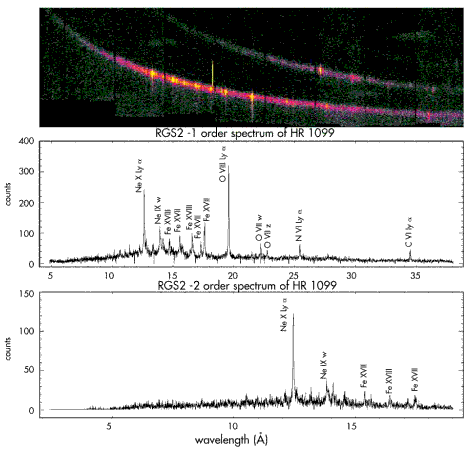XMM-Newston RGS Spectrum of HR 1099
Image Credit: ESA The top panel shows the detected X-ray photons plotted as a function of the position on the detector (strip of nine CCDs) along the horizontal axis and as a function of the energy of the photons, as determined by the CCDs along the vertical axis. Two bands can be seen, the bottom one which is the brightest is the so-called first spectral order, the top one is the second spectral order. The middle and bottom panels are plots which show the intensity of detected photons versus their wavelength.
IMAGES |
By Mission |
Stars |
HEASARC Home | Observatories | Archive | Calibration | Software | Tools | Students/Teachers/Public Last modified: Thursday, 26-Jun-2003 13:48:45 EDT HEASARC Staff Scientist Position - Applications are now being accepted for a Staff Scientist with significant experience and interest in the technical aspects of astrophysics research, to work in the High Energy Astrophysics Science Archive Research Center (HEASARC) at NASA Goddard Space Flight Center (GSFC) in Greenbelt, MD. Refer to the AAS Job register for full details. |


